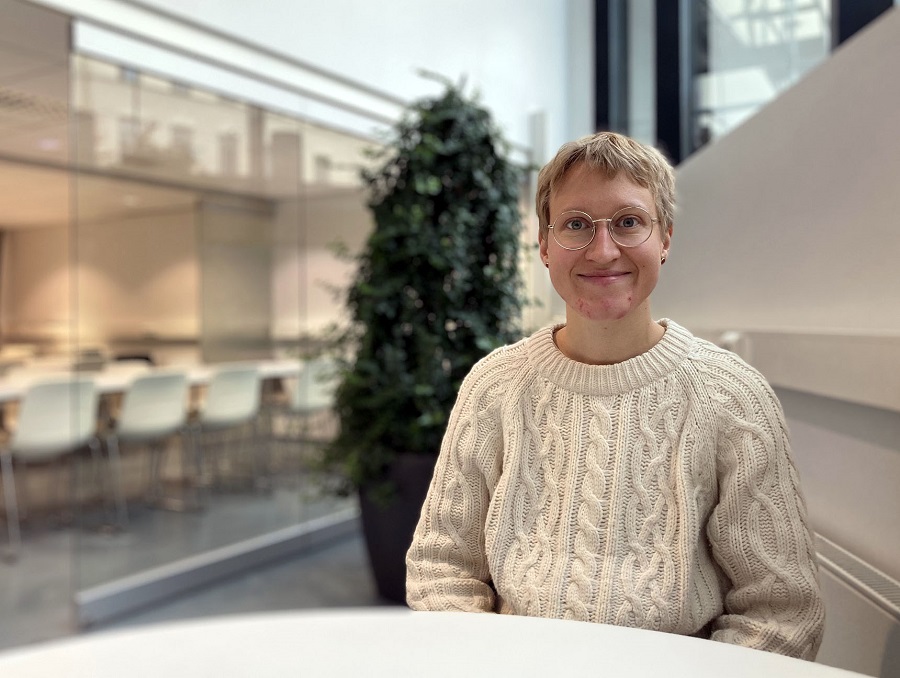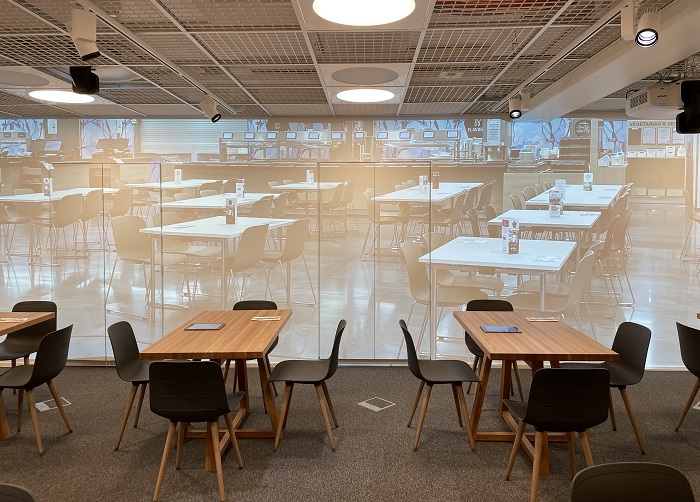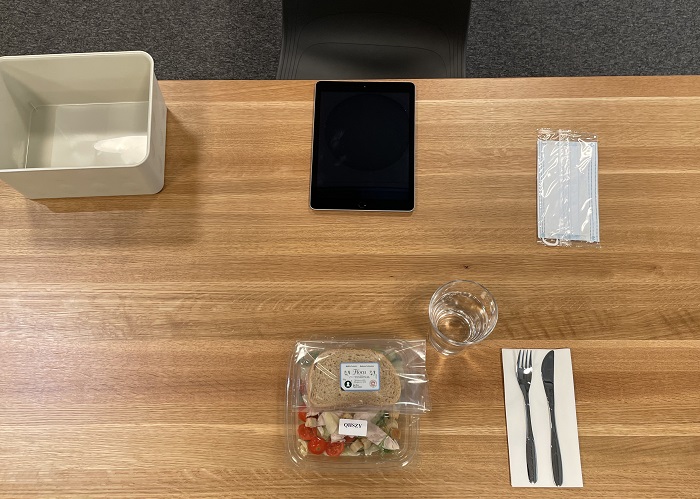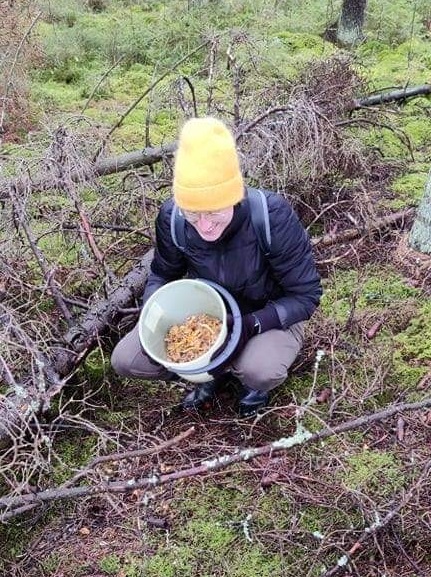In October and November 2021 we had the pleasure of welcoming in Flavoria Signe Lund Mathiesen, a PhD student from the University of Aarhus, who conducted in Flavoria and Aistikattila an interesting consumer research combining music and food. In this post, we’ll let Signe write about her study and time in Turku and at the University of Turku.
I am a PhD student from the Department of Food Science at Aarhus University, Denmark. My project is entitled “Musical Meals: How environmental sonic cues can influence eating experiences”, and it is all about investigating the relationship between the sounds in our surroundings, the food we eat, and how we eat it.
I was about halfway through my PhD when I first learned about Flavoria and the Functional Foods Forum research team at University of Turku. Based on the descriptions of the restaurant and the Aistikattila facilities, it sounded like the perfect place to conduct one of my consumer experiments. Not only was this a busy lunch canteen with many people eating their daily lunch, the Aistikattila also offered unique opportunities for controlling the factors of the surrounding environment, such as sound and music.

It all started with chocolate…
I had previously made a series of studies investigating how musical tempo influenced how fast or slow you would eat a small piece of chocolate. My results showed that, not surprisingly, slower music led to people spending significantly more time eating the chocolates than faster music. Although I believe that chocolate should be considered as an essential food group on its own, the small amount that my participants ate did not seem like a realistic meal, and I was wondering whether the results could extend to a real life scenario where people would eat a complete meal. I was also interested in exploring how not only music, but also other ambient sounds, such as a common “cafeteria soundscape” would affect the food experience and eating behaviour.
That is when we started to design the study that would eventually allow me to travel to Turku. However, this was also at the height of the Covid-19 pandemic in the summer of 2020, so there were many challenges related to this trip, especially the minor detail that physical travel was not possible.
Initially, we planned for a 3-month stay in Finland, but the Covid-19 restrictions prevented me from leaving Denmark at all. The visit was then postponed multiple times, new plans were made, a shorter stay was proposed, and finally, I was able to come for 5 weeks in October 2021!
Preparations, recruiting and a lot of Caesar salad
Before my trip to Turku, we started preparing for the study. It was designed such that all participants would be eating an identical lunch meal inside Aistikattila, while being “exposed” to a specific sonic environment. We made three different soundscapes and one condition with no sound. The soundscapes were slow music, fast music, and the sounds of a bustling cafeteria. Then we designed a questionnaire that would guide our participants through the steps of the study, ask questions on their experience, and record their eating time using a hidden stopwatch. At this point, we also started recruiting our participants, so that we could begin the study as soon as I arrived in Turku.
When I finally got here, we started setting up Aistikattila for the study. We made sure that the sonic environments were working, we ordered A LOT of Caesar salads from the lunch restaurant, and put all corona virus mitigation measures in place to make it safe for our participants to come.


We were expecting that it might be difficult to recruit participants due to the Covid-restrictions. Not as many people came to Flavoria and the Medisiina bulding as before the pandemic, so we needed to be more creative when reaching out to potential participants. We sent out a lot of emails and advertised the study on various platforms and news outlets. We even allied ourselves with a local student organisation that helped us to recruit more people. Luckily, the efforts paid off, and in the end we got more than 250 participants!
Stay tuned for the fun part – analysis and results
Now comes the fun part of analysing all the responses and hopefully publish the results in a scientific journal. For now, I cannot disclose too much about the findings, but I can say that the feedback from our participants was very positive. They were generally excited about the study, satisfied with the food, and they thought it was a fun and interesting experience to visit Aistikattila and try eating in the multisensory environment.
Museums, hiking and culinary traditions
When I was not running the study at Flavoria, I tried to see as much of Turku as possible, including a lot of the local museums. My new colleagues were very kind to take me on exciting adventures outside Turku as well. For instance, I tried hiking in the Kurjenrahkan kansallispuisto and went on a wonderful mushroom hunt in the forest. Most impressively, I am still alive after eating the mushrooms I collected!
Others introduced me to the culinary traditions and customary products of Finland, like karjalanpiirakka, voisilmäpulla, pharmacy-grade salmiakki, the entire Fazer line-up of chocolates and confectionery, and of course the mythical sahti.
Even though it’s been a relatively short stay, I felt immediately at home here in Turku. Maybe it’s because it reminds me of my own city of Aarhus. It’s similar in size, everything is within reach, we also have a canal through the city centre and soft hills to the sides. Of course, my wardrobe already fits the Turku climate (warm clothes for wet days). Mostly, though, I think it’s because of the hospitality and kindness of the people I have met here. Generosity is the norm, both when it comes to inclusivity and friendliness as well as in sharing the many peculiarities and curiosities of Finnish culture – and especially language!
It has been a fascinatingly intense visit here, so I leave with the intent on coming back to continue my exploration of this mysterious and beautiful place.
Thank you Signe for your visit and welcome again!
